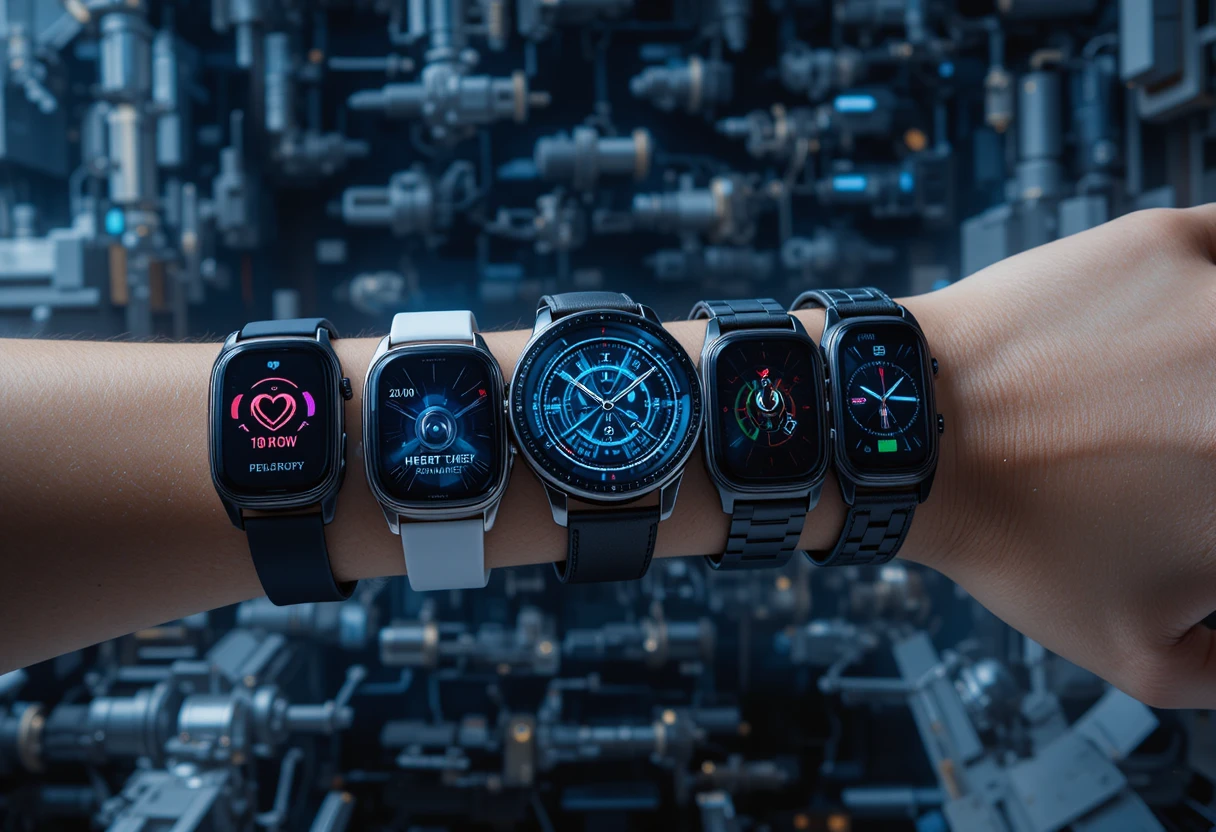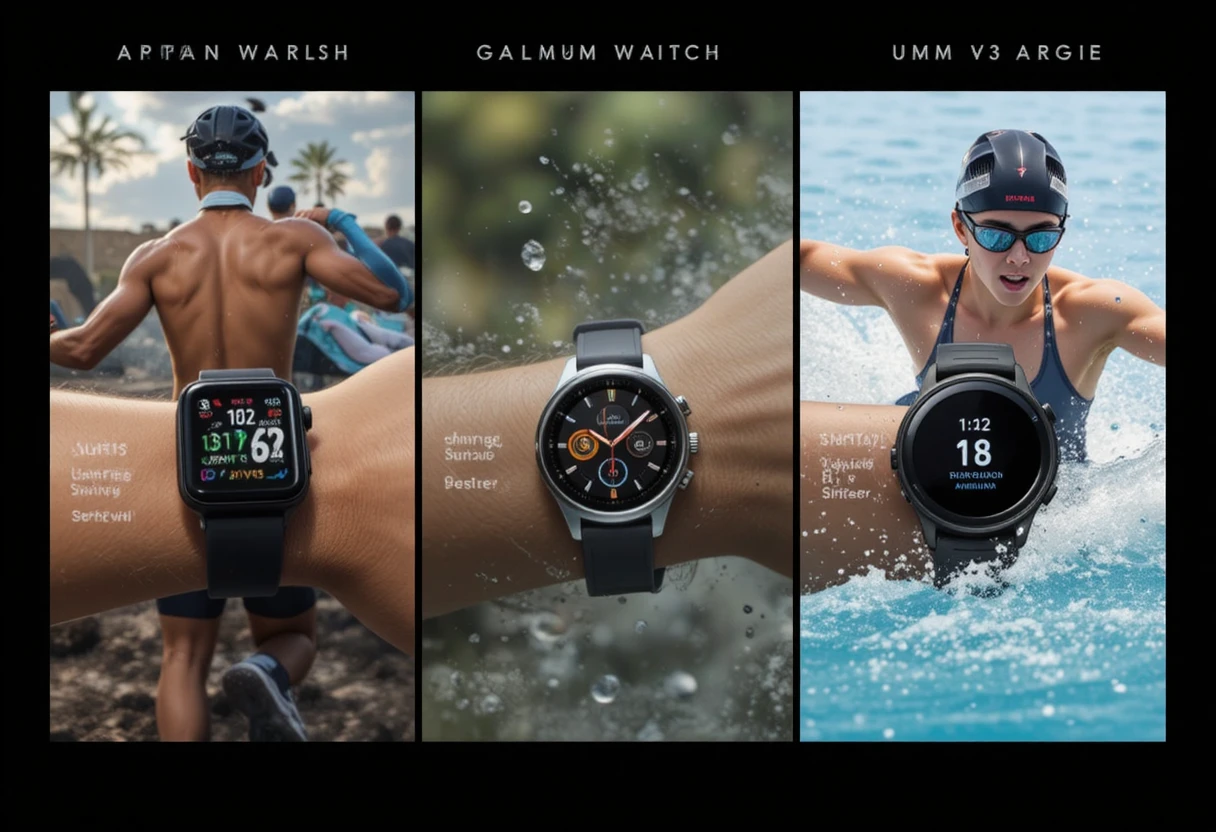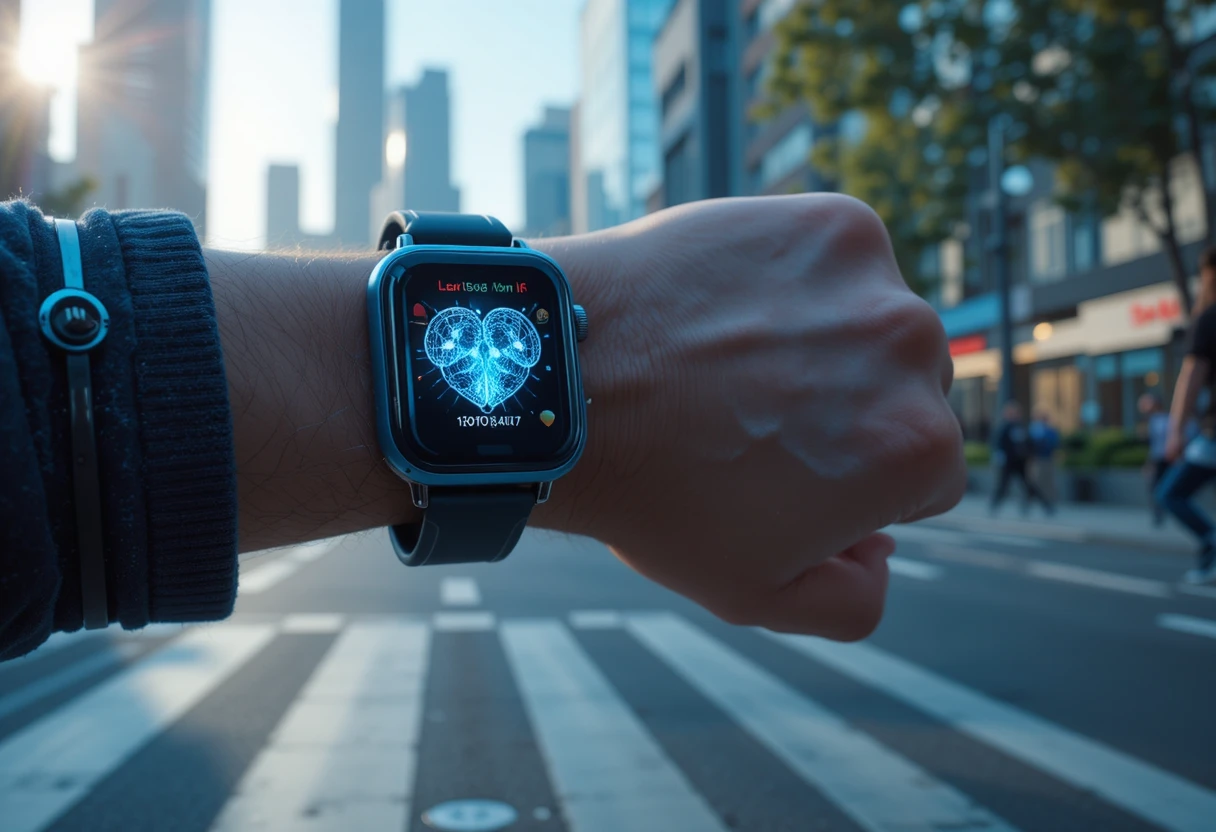Smart watches have evolved from simple timepieces to sophisticated wearable devices that integrate health monitoring, communication, and productivity tools into our daily lives. As of October 2025, the smart watch market is booming, with global sales projected to exceed $50 billion, driven by advancements in AI, battery life, and health sensors. These devices, worn on the wrist, connect seamlessly with smartphones, offering features like fitness tracking, notifications, and even standalone cellular connectivity. Brands like Apple, Samsung, Garmin, and emerging players such as Amazfit dominate the scene, catering to fitness enthusiasts, professionals, and casual users alike. This comprehensive 3000-word post explores the history, technology, top models, benefits, challenges, trends, and future of smart watches, providing insights into why they’ve become indispensable in the digital age.
What Are Smart Watches?
Smart watches are wearable computers that extend the functionality of smartphones while providing standalone capabilities. They typically feature touchscreens, sensors for health and fitness data, and integration with apps for music, payments, and navigation. Unlike traditional watches, smart watches use operating systems like watchOS (Apple), Wear OS (Google), or proprietary software from Garmin and Fitbit.
Key Features of Modern Smart Watches
Core features include heart rate monitoring, GPS tracking, sleep analysis, and notification mirroring. Advanced models in 2025 incorporate AI-driven insights, such as personalized workout suggestions or early detection of health issues like atrial fibrillation. Waterproof designs, customizable watch faces, and voice assistants like Siri or Google Assistant enhance usability. Battery life varies from 1-2 days for feature-rich models to over a week for basic ones.
Types of Smart Watches
Smart watches fall into categories: fitness-focused (e.g., Garmin Venu series), hybrid (combining analog looks with digital features), and full-featured smartwatches (e.g., Apple Watch). Hybrid models appeal to those wanting a traditional aesthetic with subtle tech, while full-featured ones prioritize connectivity.

The History of Smart Watches
The journey of smart watches began long before the digital era, evolving from mechanical curiosities to high-tech gadgets.
Early Precursors and Digital Beginnings
The concept of a “smart” watch dates back to 1927 with the Plus Four Wristlet Route Indicator, a scrolling map watch for drivers. In 1972, Hamilton and Electro/Data released the Pulsar, the first digital LED watch, marking a shift to electronic timekeeping. The 1980s saw multifunctional watches like Casio’s calculator models and Seiko’s TV Watch, which could receive TV signals.
The Boom in the 1990s and 2000s
In 1994, Timex and Microsoft introduced the Datalink, a watch that synced data with PCs via light pulses. Samsung’s 1999 SPH-WP10 was the first watch phone, allowing calls from the wrist. The early 2000s brought more advanced prototypes in the US, with basic features like contact storage and calculations. Pebble’s 2012 Kickstarter success popularized crowdfunding for smart watches, offering e-paper displays and app support.
The Modern Era: 2010s to 2025
Apple’s 2015 Watch revolutionized the market with health features and app ecosystem. Google followed with Wear OS devices. By 2025, smart watches integrate AI for predictive health analytics, with models like the Apple Watch Series 11 featuring advanced sleep apnea detection. The evolution reflects a blend of fashion, tech, and health, with over 200 million units sold annually.
How Smart Watches Work: The Technology Behind Them
Smart watches are marvels of miniaturization, packing sensors, processors, and connectivity into a compact form.
Hardware Components
At the core is a processor, like Qualcomm’s Snapdragon Wear or Apple’s S-series chips, handling computations. Displays use OLED or AMOLED for vibrant visuals, with always-on modes for efficiency. Sensors include accelerometers for step counting, gyroscopes for orientation, and optical heart rate monitors using photoplethysmography (PPG) to measure blood flow. GPS chips enable location tracking, while NFC supports contactless payments.
Software and Connectivity
Operating systems manage apps and data syncing via Bluetooth or Wi-Fi. AI algorithms process sensor data for insights, such as detecting irregular heart rhythms. Cellular models allow independent calls and streaming. Battery tech, including low-power modes, extends life, with some 2025 models lasting up to 18 hours on intensive use.
Integration with Ecosystems
Smart watches sync with phones for seamless experiences. Apple’s ecosystem locks features to iOS, while Wear OS offers broader Android compatibility. Cloud services store health data for long-term analysis.
Top Smart Watches in 2025
2025’s smart watch lineup emphasizes health, battery life, and AI, with models catering to various budgets and needs.
Premium Picks
The Apple Watch Series 11 stands out for iPhone users with its sleek design, ECG capabilities, and watchOS 12 updates. Samsung’s Galaxy Watch 8 offers a cushion design, AMOLED display, and Wear OS integration, ideal for Android. Garmin Venu 4 excels in fitness with advanced metrics and a built-in flashlight.
Mid-Range and Budget Options
The OnePlus Watch 3, priced around $300, builds on Wear OS with a 7-day battery. Amazfit Bip 6 and Active 2 offer long battery life (7+ days) at under $100, perfect for beginners. Fitbit Ace LTE targets kids with safety features.
Specialized Models
For luxury, GRAND WATCH leads with health-focused designs. Non-Apple alternatives like Spade & Co Health Smartwatch 4 provide comprehensive tracking.

Benefits of Smart Watches
Smart watches offer multifaceted advantages, enhancing health, convenience, and productivity.
Health and Fitness Monitoring
They track steps, calories, heart rate, and sleep, providing actionable insights. Advanced models detect diseases like heart conditions or COVID-19 early. In healthcare, they support self-monitoring, reducing visits.
Convenience and Productivity
Notifications, calls, and payments from the wrist save time. GPS tracks locations, aiding fitness and safety.
Accessibility and Customization
Features like voice commands assist those with disabilities. Customizable interfaces suit personal styles.
Challenges and Limitations of Smart Watches
Despite benefits, smart watches face drawbacks that impact adoption.
Battery Life and Durability
Many require daily charging, and batteries degrade over 2-3 years, costly to replace. Durability varies; not all withstand rigorous use.
Data Accuracy and Privacy
Sensors may inaccuracy in metrics like heart rate. Privacy concerns arise from data collection, with risks of breaches.
Cost and Compatibility
Premium models exceed $500, and ecosystem lock-in limits choices. Health equity issues persist in underserved areas.
Over-Reliance and Distractions
Constant notifications can distract, and over-reliance on data may cause anxiety.
Current Trends in Smart Watches (2025)
2025 trends focus on AI, health, and sustainability.
AI and Advanced Health Features
Watches like Apple Watch Ultra 3 integrate AI for deeper insights, such as sleep apnea detection. Trends include body composition analysis and mental health tracking.
Sustainability and Design
Eco-friendly materials and longer batteries address environmental concerns. Designs blend luxury with tech, like integrated bracelets.
Market Growth and New Releases
Releases include Amazfit Active 2 (February) and Apple Watch SE 3 (September). The market grows at 15% annually, driven by fitness demand.
From X, users discuss 2025 models like OnePlus Watch 3 for battery life.
The Impact of Smart Watches on Society and Lifestyle
Smart watches influence health behaviors, promoting activity and early intervention. In society, they bridge digital divides but raise equity issues. Economically, they fuel a $100 billion wearable market by 2035.
The Future of Smart Watches
By 2030, expect seamless AR integration and non-invasive glucose monitoring. AI will predict health events, and sustainability will prioritize recyclable components. Challenges like privacy will drive regulations, ensuring ethical use.

Conclusion
Smart watches have transformed from novelties to essentials, blending style, health, and tech. In 2025, models like the Apple Watch Series 11 and Samsung Galaxy Watch 8 lead with innovative features, while benefits like health monitoring outweigh challenges like battery life. As trends evolve toward AI and sustainability, smart watches promise a healthier, more connected future. Whether for fitness or convenience, they’re a worthy investment in wearable tech.